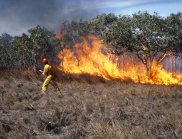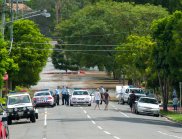Technology to help weather bushfires, floods and more
While technology can’t prevent catastrophic events, a CSIRO report released in Canberra today reveals how emerging technologies help emergency services better manage natural disasters and minimise their effects on people, infrastructure and the environment.
The report ‘All Hazards: Digital Technology & Services for Disaster Management’ brings together for the first time key examples of CSIRO research in disaster planning, preparation, rescue and recovery.
Mr Alan Dormer, Research Leader, Government and Commercial Services at CSIRO said that in 2010, 385 natural disasters impacted 217 million people worldwide and cost the global economy US$123.9B.
“In Australia, we had the 2011 Queensland floods and Cyclone Yasi, and the 2009 Black Saturday bushfires. We’ve yet to discover what the 2012-13 summer cyclone and bushfire season will bring,” he said.
“Of course all this technology won’t be able to stop natural disasters happening but it will provide ways to plan for and manage disasters more effectively and so reduce the human costs.”
Mr Alan Dormer, Research Leader, Government and Commercial Services, CSIRO
CSIRO has been researching natural disasters such as bushfires and floods for many years but has now set up a disaster management research team in its new Digital Productivity and Services Flagship to integrate many areas of research and take a broader ‘all hazards’ approach.
“Although we’ve got lots of pieces of the natural disaster research puzzle, we haven’t got all of them. We’d like to bring together CSIRO’s existing expertise and provide support across the spectrum of prediction, preparation, emergency response and recovery.”
“We also want to collaborate with organisations with complementary data sources and capability, such as Geoscience Australia and the Bureau of Meteorology.”
“Of course all this technology won’t be able to stop natural disasters happening but it will provide ways to plan for and manage disasters more effectively and so reduce the human costs,” he said.
The report details a range of CSIRO research areas in disaster management and gives selected examples of how the research is being used in real life situations.
For example, it explains how realistic, maths-based fluids models of tsunamis and storm surges are being used by coastal councils to predict which homes and businesses are vulnerable and test scenarios.
It also highlights how social media is changing how emergencies are reported. Mentions of disasters in Twitter posts are detected by CSIRO software to give rescue services early warning of emerging situations.
Another example in the report shows how research into the behaviour of bushfires can be combined with computer models to give fire services vital information about where to send people and equipment as a fire develops.
And how advances in spatial data technologies and analytics are improving the ability of governments here and overseas to locate vulnerable communities and direct aid more effectively.
“Our disaster management report gives a science-based, referenced overview of what science is doing to inform decisions about what nature throws at us,” he said.
Media resources
Click image for high resolution version



